In the world of interior design, visuals speak louder than words, making your stunning projects prime material for magazine features. Because publications crave striking imagery, securing features is a win-win for both you and the media outlets.
You can provide magazines with high-quality images, either from a professional photographer you’ve hired or ones you’ve taken yourself.
This can boost your visibility, drive leads, and add more authority to your brand, making it easier to win over potential clients.
In this guide to PR for interior designers, we’ll walk you through how to achieve impressive and profitable publicity wins.
Table of Contents
Why publicity is important for interior designers
In some industries, PR is seen as fluffy or unimportant. Not so in the world of interior design. Great publicity can catapult your brand and win you bigger projects, brand deals, and unforeseen opportunities.
Here are all of the reasons why publicity is worth the effort:
- Builds your brand and authority – Adding a media page to your website and showcasing your coverage helps clients see you as the expert. This is a big step towards charging more premium rates.
- Can drive a temporary boost of inquiries – If the outlet has a decent-sized audience you can expose your business to a whole new audience of potential leads and customers, vastly expanding your reach.
- Makes for great social media posts – Many of the people following you plan to hire you someday. Maybe they’re waiting until they purchase a new house, or until some funds get freed up. You need to stay top-of-mind with your followers and show them that you’re the best choice for when they’re ready. In addition to tutorials and before-and-afters, you should also post business wins. Sharing publicity features on Instagram and other platforms usually gets lots of engagement, meaning the algorithm boosts the post to more of your followers.
- Helps with your website’s SEO – In our guide to SEO, we explain how publicity affects SEO in detail. But for now, just know that when you get digital media coverage in the form of podcast interviews and online features, Google sees this as proof that you are the authority in your niche or local market. So, even if you don’t get an immediate burst of leads from an interview, it can still positively impact your marketing.
How publicity compares to other strategies for growing your business
Yes, publicity is important. Yes, it can help you grow your business. But no, it’s not known for driving a steady stream of leads.
As much as we all love publicity, it’s important to mitigate that excitement a little bit. If you’re in the earlier stages of your business, you’ll get better results from investing time into networking and Instagram.
Later, when you’ve already got plenty of business coming from referral partners and social media, you can invest more time into PR. And even still, it should probably account for only 15-25% of your time spent on marketing (unless you are looking to build a big personal brand that takes you beyond offering design services and into more of a content creator and media personality sort of role).
3 great examples of PR for interior designers
To help get your wheels churning, here are some inspiring examples of interior designer features.
1. Emily Yeates of Urban Revival in Architectural Digest
Check out this interior design PR example from Architectural Digest with 10 unique ways to use stainless steel. Emily Yeates of Urban Revival shows off one of her client projects, which includes a glass and powder-coated stainless steel partition.
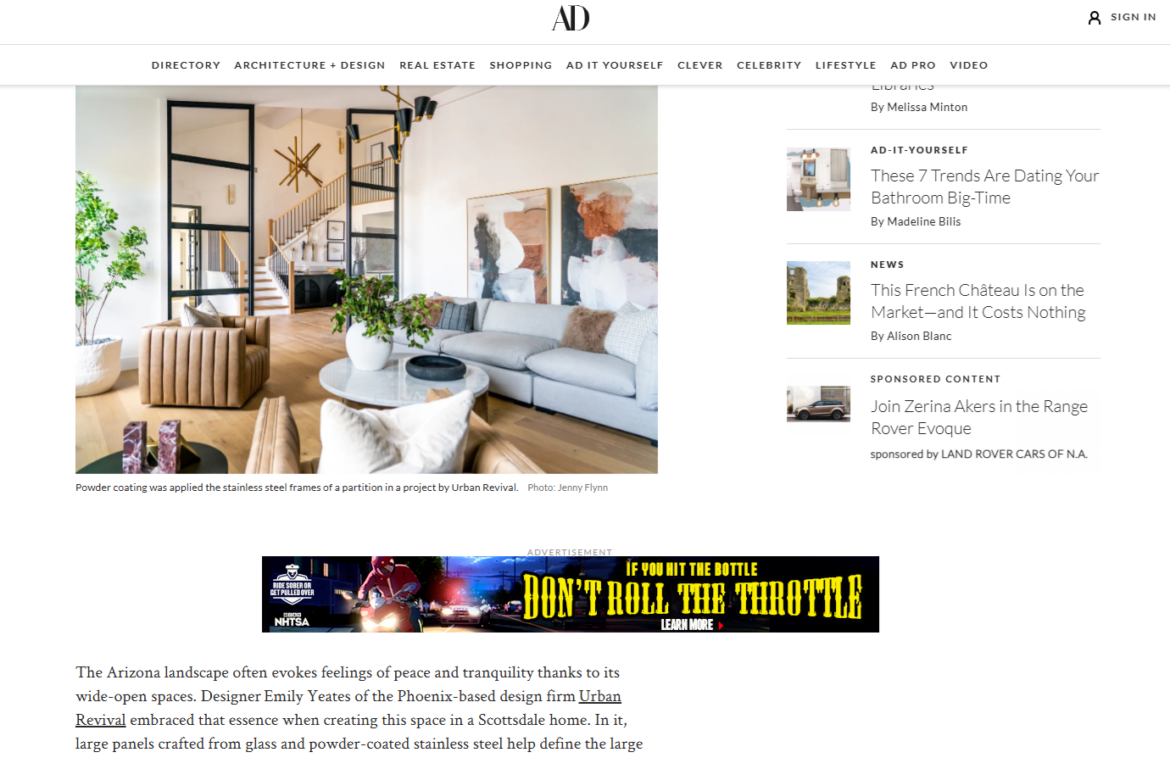
As you build up your portfolio, you can reach out to media contacts and let them know about your designs. Include some of the more interesting elements in your pitches to alert journalists to new interior design trends. Over time, journalists will become familiar with your name and work and will approach you for content to include in their articles.
2. Tiffany Brooks’ cover in HGTV Magazine
Tiffany Brooks of Tiffany Brooks Interiors utilizes PR as a main client acquisition channel for her business. Since winning season 8 of HGTV’s Design Star, she’s kept up a strong relationship with the media brand, continuously featured on various TV shows, social media content, and the print magazine.

While getting on television might feel out of reach, you can certainly learn from her example. Once you establish a relationship with a press outlet (be it a local TV station, online podcast, or local lifestyle magazine), make sure to stay in touch. Pitch new ways to help them develop high-quality, on-trend content.
3. Kerrie Kelly’s Collaboration with Eldorado Stone
In today’s digital world, you need to think beyond traditional PR. Check out this collaboration between Eldorado Stone and Sacramento-based interior designer Kerrie Kelly. In the video, Kerrie dives into current stone trends and the transformative power of manufactured stone and brick veneer. The video was featured in Eldorado Stone’s social media channels, email campaigns, website, and in a press release.
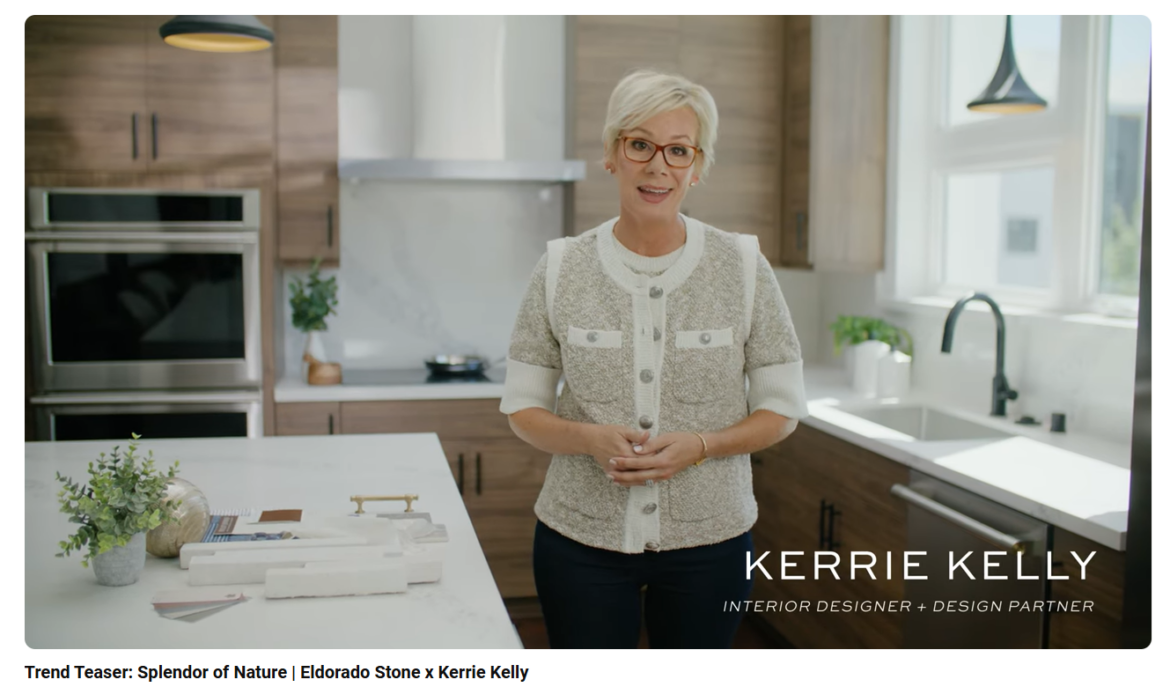
Are there any local manufacturers, brands, or stores you can partner with? Remember, every company is desperate for fresh content, and digital media with real humans performs better than solely focusing on the products alone. So, reach out to local companies and ask if they’re interested in collaborating with you on content creation. You’ll be able to reach their audiences and will likely receive leads from homeowners looking for help.
5 best PR agencies for interior designers
Looking for expert help? Check out these publicity agencies who specialize in the interior design industry.
1. A Design Partnership
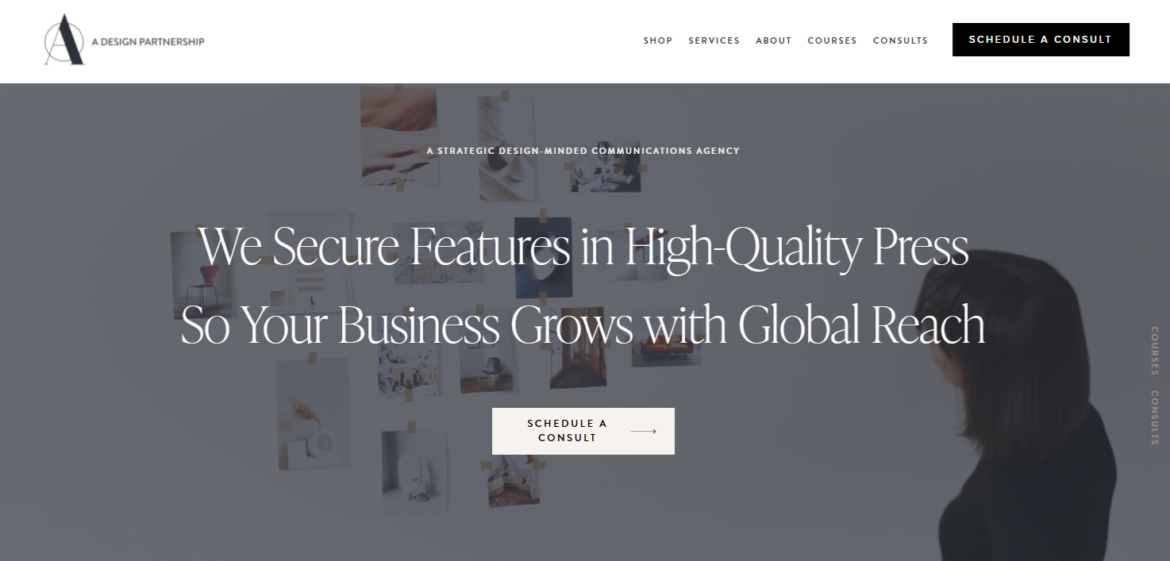
Founded by Natalie Norcross, A Design Partnership is a strategic communications agency that specializes in elevating interior design, lifestyle, and hospitality brands through high-quality media exposure. Their team of seasoned professionals brings industry-focused experience to create turnkey solutions, from brand positioning to proactive media relations. By securing features in leading publications, A Design Partnership helps clients attract better business and establish themselves as industry leaders.
2. Caroline Pinkston PR
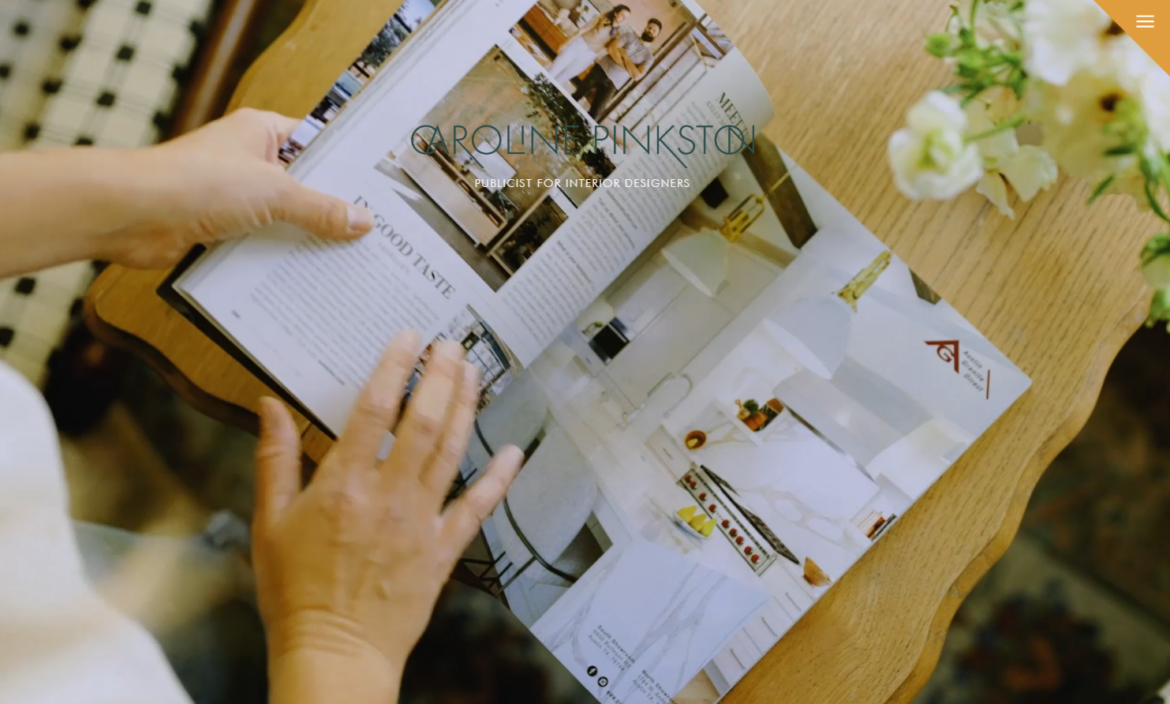
Caroline Pinkston PR specializes in elevating interior designers and lifestyle brands by connecting them with the right people and media outlets. With over 15 years of experience, Caroline has a proven track record in public relations, partnerships, and influencer marketing, including her early work with the Dove Campaign for Real Beauty at Edelman. Her expertise spans securing high-profile media placements and managing brand relationships.
3. Ink PR Group
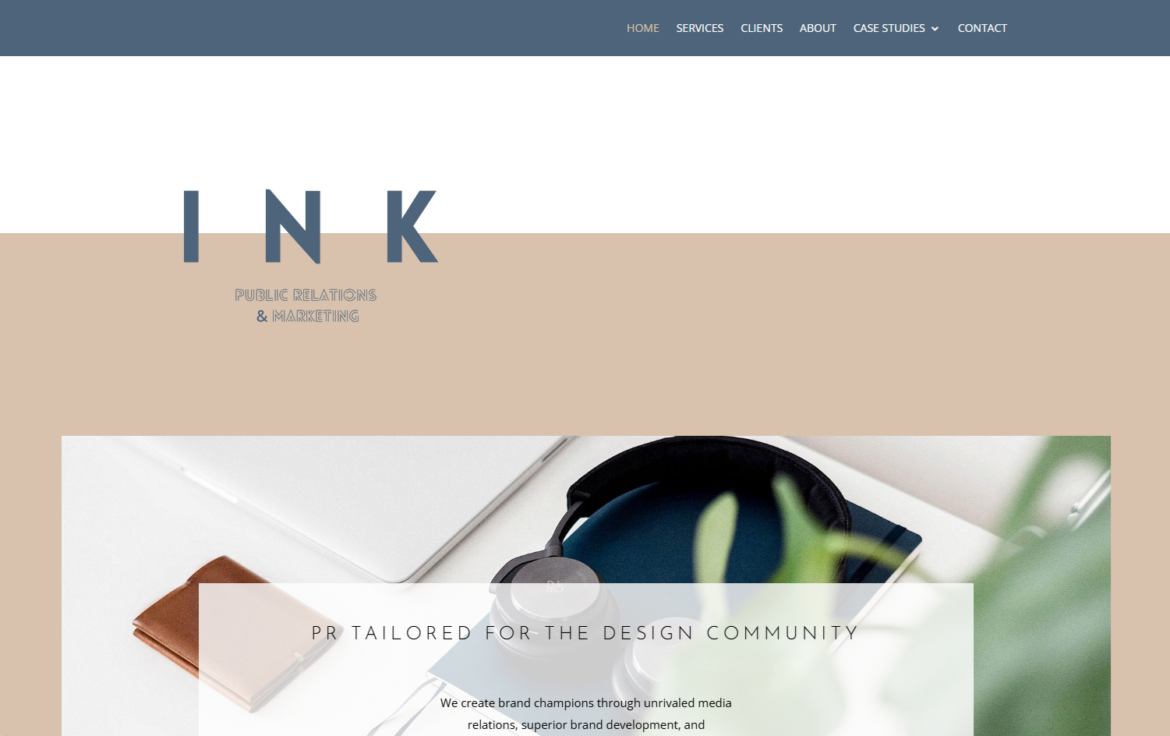
Ink PR Group is a boutique public relations firm specializing in crafting communications for interior designers, architects, landscape architects, and home and lifestyle product brands. Founded by Courtney Pisarik, the agency combines extensive industry knowledge with a creative approach that includes media relations, social media, content creation, and branding. Ink PR has helped top names like Bobby Berk (of Netflix’s Queer Eye) and Breegan Jane (of HGTV’s Extreme Makeover: Home Edition) achieve major media milestones.
4. The Consultancy PR
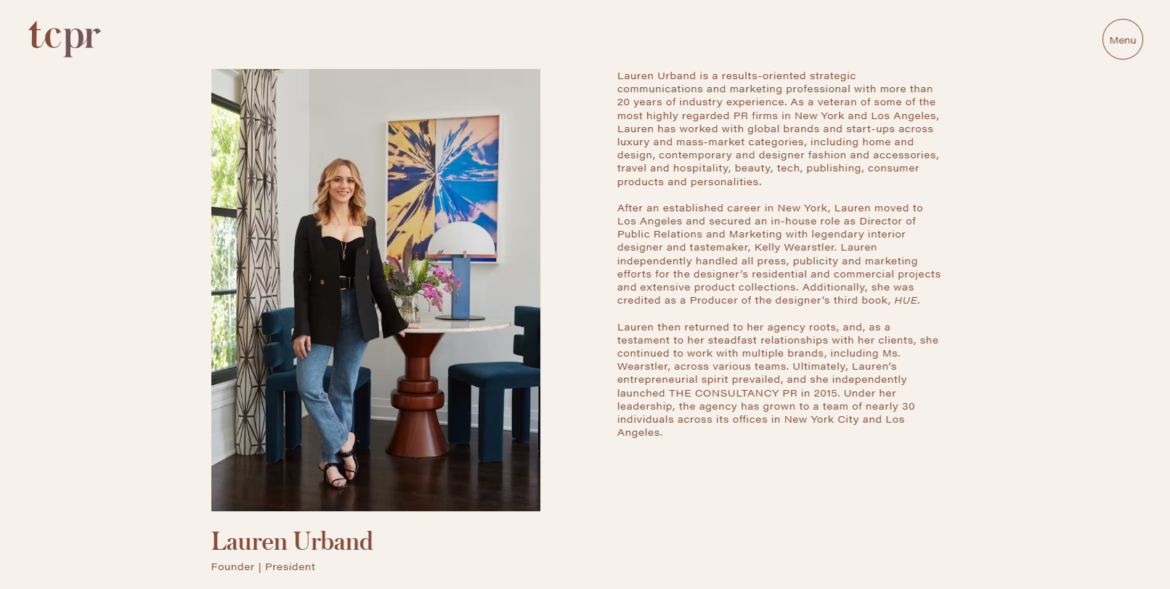
Lauren Urband, a seasoned communications and marketing professional with over 20 years of experience, founded The Consultancy PR in 2015 after a successful career at top PR firms in New York and Los Angeles. Her experience includes working with a diverse range of brands, from luxury to mass-market, across industries such as home design, fashion, travel, and technology. Before starting her own agency, Lauren served as the Director of Public Relations and Marketing for interior designer Kelly Wearstler, where she managed all aspects of press and marketing for the designer’s projects and product lines. The Consultancy PR has since grown into a well-regarded agency with nearly 30 team members.
5. The Storied Group
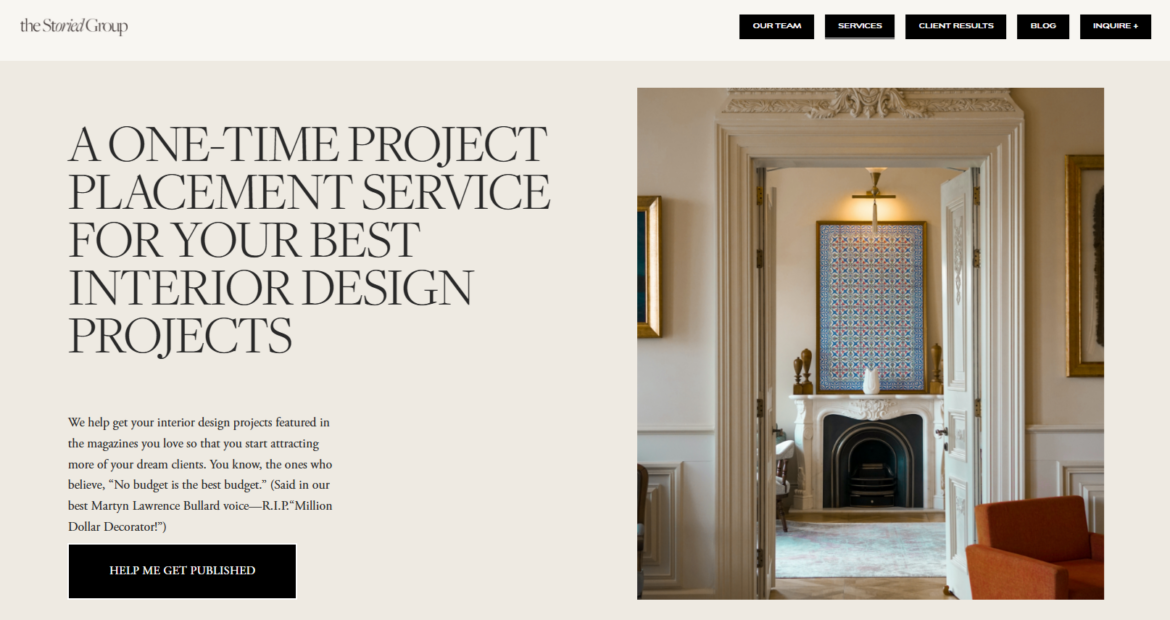
The Storied Group offers a specialized one-time project placement service tailored for interior designers who want to see their best work featured in prestigious design publications. This service, known as “A Design Well-Placed,” is perfect for designers with a full home project ready for media attention but who may not have the time or resources for ongoing PR. The service includes a comprehensive review of your project photos, a detailed project questionnaire, a curated list of potential media outlets, and the management of the entire pitching process. This service is ideal for designers who want media coverage but don’t want to get locked in a long-term contract.
How to do PR as an interior designer
We’re not going to lie. PR is a bit of work. But when you know how to break it down and batch it up, it becomes more doable. Here’s how.
Step 1. Figure out what makes you special
Don’t skip this step! First, you need to get crystal clear on your niche and your ideal target audience. You want to use PR to build your brand authority, so it’s important that the PR you go after will build that brand. For example, if you want to be the go-to nursery designer for NYC professionals, getting featured in parenting magazines might have a bigger impact on your business than getting featured in design magazines.
Step 2. Create a list of your target outlets
To get started, think of publicity as a pyramid. TV is at the top, then magazines, then digital publications, then podcasts, then guest blogs. Start your way at the bottom, and work your way up. As you go up, there will be more competition, and it will be harder to get featured on top sites and networks.
Depending on where you’re at with your publicity journey, you can create a running list of target outlets for all of these or just a few:
- Television
- Print publications
- Digital publications
- Podcasts
- Blogs
Make a Google spreadsheet, and create a new tab for each of the categories. A spreadsheet is better than a document because you’ll be adding contact information to it later.
If you get stumped, check what other designers are doing. Type in some competitors or designers you love into Google News, and see what major outlets they’ve been covered in. You can also type their name plus the word “podcast” or “interview” to pull up more hits in a regular Google search (News results usually only include major news brands).
Just Get Started Tip: Don’t pressure yourself to come up with a big list all at once. Instead, just start the foundation and add to it every time you discover another goal outlet.
Step 3. Make sure local media outlets are on your hit lists
Don’t ignore local media outlets, even if you primarily offer e-Design services. Local outlets are typically easier to get into, as there’s less competition.
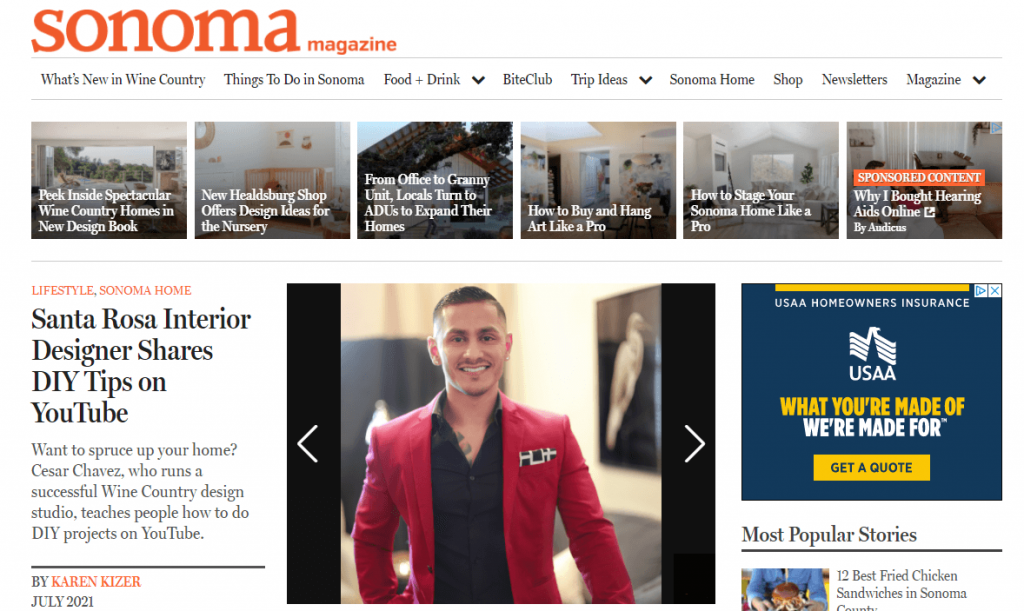
Depending on where you live, there might be these local outlets:
- Subscription print magazines
- Free print magazines
- Digital magazines
- Radio stations
- TV stations
- Podcasts
- Blogs
And if you do offer in-home services, then local publicity can bring in valuable leads, while national publicity will serve mostly as an authority-builder.
Step 4. Research contact information (or outsource this to an assistant)
After you’ve got your list of target outlets, it’s time to start adding contact information. You can find editors’ information in a variety of ways.
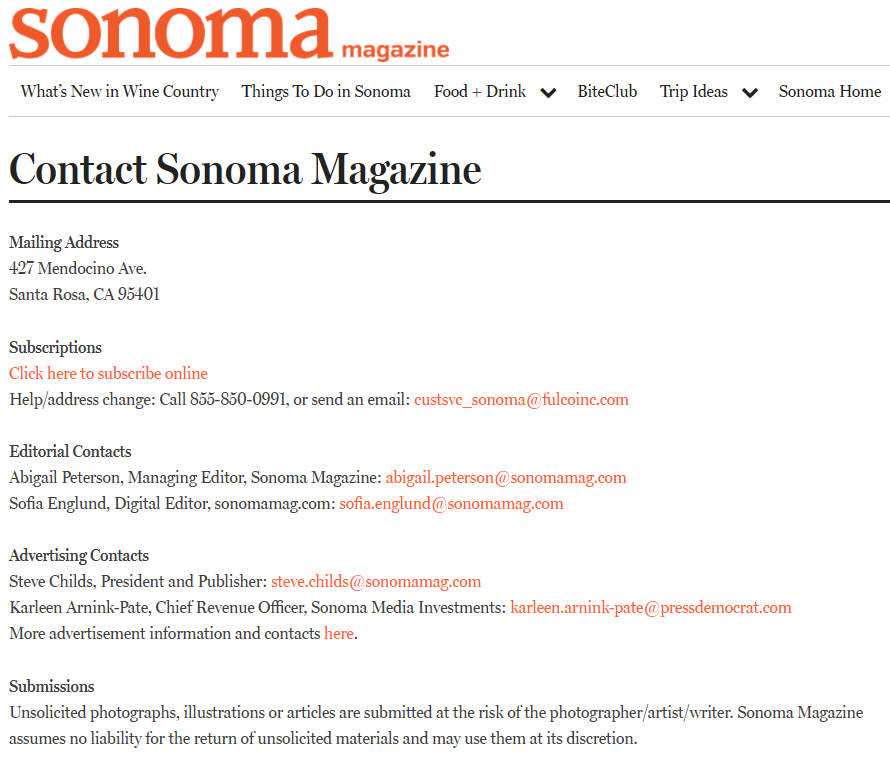
Here are all of the ways you can find contact information for contributors, podcasters, editors, bloggers, etc.
- Contact pages – Blogs, podcasts, and other content creators will often have contact pages where you can find direct information. Avoid contact@, info@, and hello@ types of addresses unless it’s a one-person business, or they explicitly ask for pitches to be sent to that email address on the contact page.
- Mastheads – Every print and digital publication has a masthead, a list of the directors and editors and the departments they’re in charge of. Many mastheads don’t include email addresses, so you’ll need to use cold email software, PR software, email verification software, Twitter profiles, or LinkedIn email scraping software (all described below).
- Cold email software – Cold email tools can be used to find email addresses for just about anyone. Snov.io and Hunter.io are popular options. Just pop in a website domain and you’ll be able to pull up several email addresses within that company.
- Email verification software – If you can’t find the email address of the person you want to contact, you could use Snov.io or Hunter.io to find the pattern of addresses at that company. For example, at Dezeen, we can see that email addresses are usually firstname@dezeen.com. So, you could guess the email address of a reporter or editor you want to contact by using that same format. Then, run it through an email verifier (also known as a bounce checker) to make sure it’s a real email address before you attempt to use it.

- PR software – You can also use a dedicated software for finding journalists’ contact information. Prowly and Presspage both offer media contact databases, though keep in mind that these tools can cost a couple hundred dollars a month. They will allow you to find contact information, and send out campaigns via email.
- Twitter profiles – Many journalists include the email address where they want people to send pitches inside of their Twitter profile. So you can always check there first.
- LinkedIn email scraping software – You can find out what email address someone used to sign up for LinkedIn. This is most likely an email address that the person uses frequently. GetProspect and Prospecting Toolkit are both good options.
Just Get Started Tip: If you can’t afford to outsource this, don’t pressure yourself to do all of the research in one go. Set aside an hour a week or a three-hour chunk each month to research contacts, and just add what you can, when you can.
Step 5. Create a media bio and pitch templates
Creating a media bio and pitch templates is a game-changer when reaching out to lots of publications. A strong media bio showcases your skills and accomplishments, so editors get why you’re a standout choice. Meanwhile, pitch templates make your life easier by giving you a ready-made structure to tweak for each publication. You can customize each pitch quickly without starting from scratch. This preparation not only saves time but also increases your chances of getting featured in your target publications.
(Keep scrolling to the bottom of this article for a media bio template and 3 pitch templates!)
Step 6. Set up your email for pitching and tracking
Now, it’s time to put two and two together: your contact list and your pitch templates. You can use your main email address to start sending pitches, no fancy software required.
If you just use your own email sender, you will be in charge of tracking follow up. You can do this in your spreadsheet (create a column for when you send an email, and then follow up two weeks later). Or, you can use Yesware for reminders. This tool layers on top of your inbox so you’re not having to use a separate software.

Another way to stay organized is to have a separate email address for pitching, so you can see what you’ve sent and the responses all in one place (with no clutter from anything else). So, if your email address is desire@designer.com, your new email address for pitching could be desire.alaniz@designer.com. If you try this method, make sure to check that email address too!
Just Get Started Tip: The easiest way to send pitches is to use your main email address instead of a PR pitching software like Prowly, Presspage, or Postaga.
Step 7. Pitch weekly
Keep adding new outlets and contact information to your spreadsheet. And keep on pitching. Try to send 5-10 pitches to different outlets every single week. Follow up once or twice after the first email, but don’t take that contact off your list. You can always pitch them a new idea 6-12 months later.
Keep in mind that some podcasts and blogs have forms for applications, so if you fill out a pitch form, add that to your spreadsheet to keep track of the date that you did that. It’s better to not follow up on pitch forms and re-submit the same idea. Instead, wait 6-12 months and pitch them a new topic.
Step 8. Leverage pitch-free resources
Pitching isn’t the only way to get publicity for your interior design business.
Here are three ways to get publicity without sending emails:
- #journorequest – On Twitter, journalists will use this hashtag when looking for sources for their articles. You can type #journorequest + a keyphrase specific to your business to pull up more relevant requests. For example you could search #journorequest design, #journorequest interior design, #journorequest female business owners, #journorequest women entrepreneurs
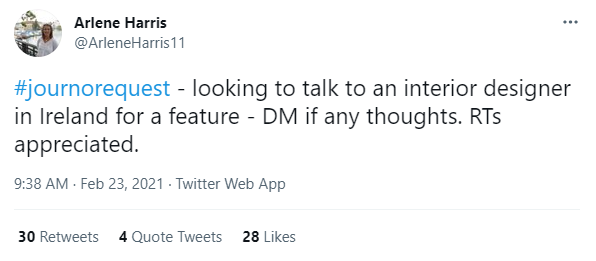
- HARO – Help a Reporter Out is a popular online resource. Journalists and bloggers use it to find sources for articles for big publications, popular lifestyle blogs, and small niche websites. Sign up for the email notifications, which go out 3 times a day. Scan through for anything related to your business, and respond with 100 – 300 words of your top tip, example, or story to share. Only spend time answering queries that you are a perfect fit for. For example, if the journalist specifically says they are looking for an architect, and you’re not an architect, it’s best not to respond. Instead, look for the queries where the journalist is looking for an interior designer, design expert, etc.
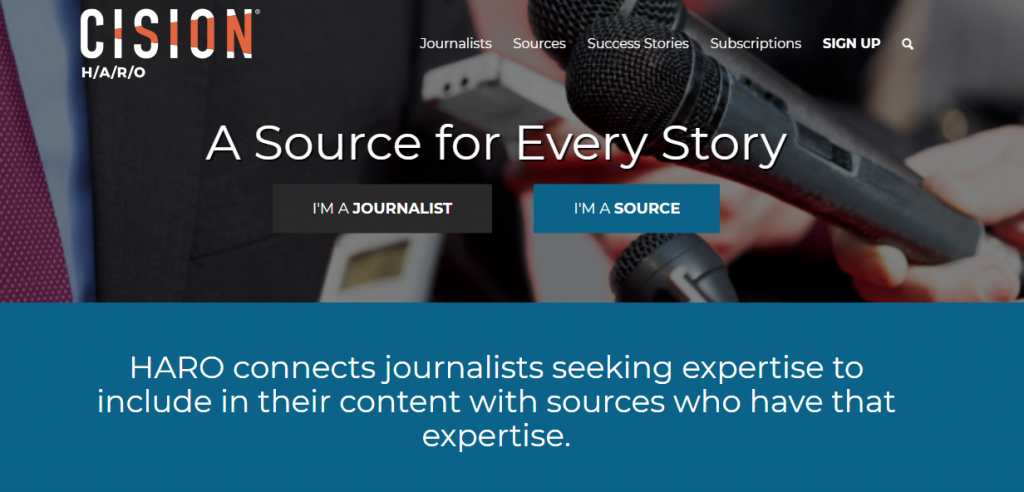
- Optimized social media profiles – Check your DMs! If your social media profiles are optimized (quality images, clear specialization) and if you post on social media regularly, you will occasionally get reporters, bloggers, and podcasters asking to interview you. Check their follower counts first before you agree to make sure it’s a worthwhile opportunity.
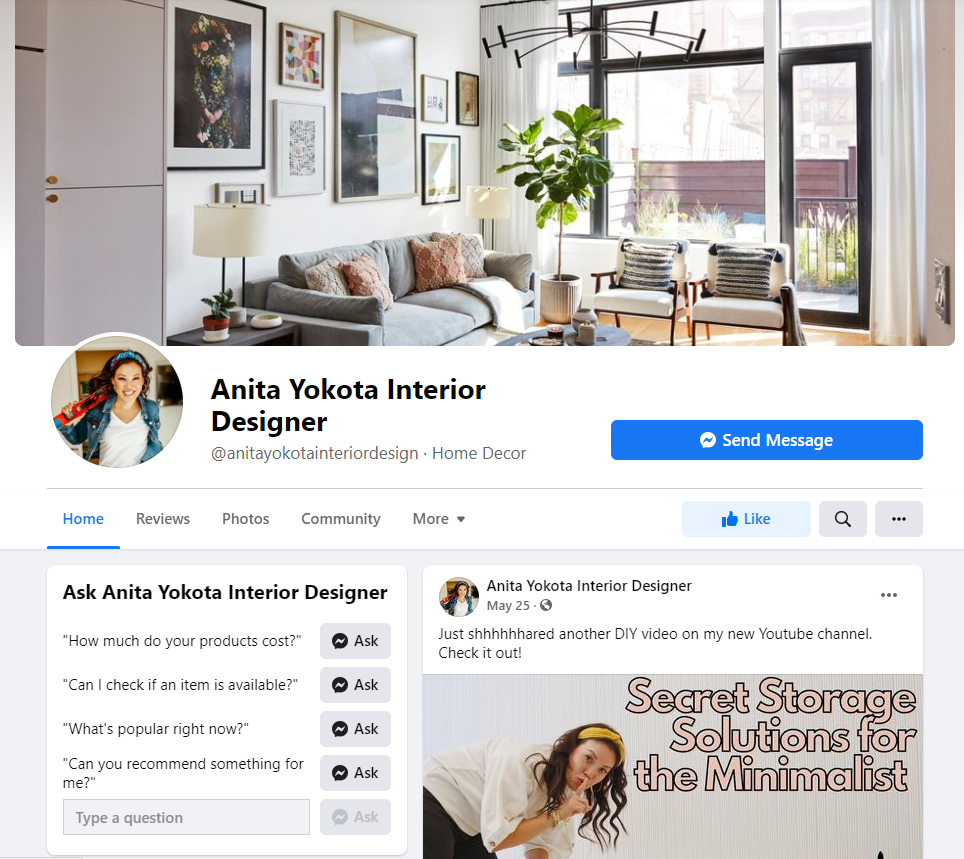
Step 9. Use your wins to get more publicity
Don’t be put down if you have no publicity right now. You have to start somewhere. Get going with guest blogging and podcast guesting. Then, you can use these to get into bigger and better publications. Continually update your media bio to include the new coverage.
You might also update your social media profile descriptions and headers to portray your coverage too. This encourages journalists and content creators to reach out to you.
PR serves a lot of purposes for interior designers. It generates leads, spices up your social media posts, and helps you build your brand. Follow these tips, and you’ll soon have your own brag-worthy publicity.
4 PR templates for interior designers
Want to rock your DIY publicity campaign? Just use these ready-to-go templates.
1. Media bio template
Press features can bring in new leads and increase your desirability for potential clients. Media coverage can also boost your SEO rankings by telling Google’s algorithm that you’re an authority.
You can include this bio on a media page on your website, and you can also put it at the bottom of your email pitches.
Essentially, this template covers:
- What you do
- Where you’ve been featured
- A fun fact about you
[insert your name] is a [insert location]-based designer specializing in [insert area of expertise and passion]. Her work has been featured in [insert publication] and [insert publication]. When not designing, she can be found [insert hobbies and focus on sharing personal details that help others relate to you].
Example Media Bio
Desiree Alaniz is a Los Angeles-based designer whose mid-century modern designs pay homage to the city’s architectural history and beachy ease. Her work has been featured in Brentwood Magazine and LA Weekly. When not designing, she can be found hiking the hills with her daughter and their pug.
2. Pitch template for print and digital magazines
Media opportunities might come to you if you have optimized social media profiles. But you don’t have to passively wait. You can reach out and win these opportunities yourself.
Here’s a pitch template for reaching out to print and digital magazines:
Subject line: Pitch – [Article title]
Hi [Editor’s Name],
I hope this finds you well. I’m an avid reader of [Publication Name] and have always enjoyed [mention something specific you appreciate about the publication. Ex: features of local designers].
I have a pitch that I think your readers would love.
[Pitch Article Title] [Two-to-three sentence article description]About me: [Insert Media Bio (see template above)]
[Also, include a sentence about how your work aligns with the publication.]I’d be happy to include images to accompany the piece. I’ve included a link to some images so you can see the quality of my portfolio: [Google Drive link]
I respect your time and priorities. If there’s room for collaboration or an interest in exploring this or other article ideas, I’d love to connect.
Thanks for considering this. I look forward to the possibility of contributing to [Publication Name].
Best,
[Your Full Name] [Your Contact Information] [Link to Your Portfolio/Website] [Optional: Social Media Profiles]
Here’s an example title and description to get your wheels turning:
8 Budget-Friendly Mid-Century Modern Design Tweaks
Mid-century modern is a broadly appealing style because it’s classic, cozy, and contemporary all at the same time. In this piece, I’ll provide design tweaks readers can make, such as great ways to revamp what they already have, how to choose paint colors and my go to local spots for sourcing vintage furniture, artwork and accessories. I can provide the content and imagery for the piece.
3. Pitch template for smaller sites
If you’re reaching out to bloggers and local lifestyle sites, you can use this template instead.
Subject line: Pitch – Seattle area designer on locally inspired living spaces
Hi Catherine,
As a [location or niche] interior designer, clients often want spaces that [client demands]. I’ve created dozens of living spaces for local clients that elevate the [location or niche] style.
I’d be happy to share [article idea], along with plenty of photos for inspiration. I’ve included a link to some images so you can see the quality of my portfolio: [Google Drive link]
I have [X] years of design experience in [location or niche], and I’ve previously contributed to [media sample with link] and [media sample with link].
Does this story appeal to you? If not, I can send over a couple of other ideas.
All the best,
[Your signature]
Here’s an example of the body of the pitch:
As a Seattle-based interior designer, clients often want spaces that give a nod to our local history and environment without being too kitschy or touristy. I’ve created dozens of living spaces for local clients that elevate the Seattle style.
I’d be happy to share my tips for homeowners, along with plenty of photos for inspiration.
I have 10 years of design experience in Seattle and surrounding areas, and I’ve previously contributed to The Spruce and House Beautiful.
4. Pitch template for podcasts
Podcasts can be another great source of visibility, traffic, and website backlinks (which are great for SEO).
Use this pitch template when reaching out to podcasters:
Subject: Podcast guest: All things e-Design
Hi [Podcast Host],
I absolutely love your [podcast name] and particularly enjoyed the [old episode name or guest name] episode where you discussed [insert a discussion topic from that episode]!
I’m an [insert title] who specializes in [insert area of expertise], and I’d love to share some design tips with your audience of [insert who their core audience is. Ex: busy moms, century home enthusiasts, etc.].
Some potential topics I can speak about include
[Insert list of three bulleted topics. See examples below]:– Easy mid-century modern design tips
– How to hire an e-Designer, and how this is more affordable than full-service design
– Building my business while being a single mom
I’ve been featured in [insert publication] and [insert publication]. My combined email list and social media following is [insert total number of following], and I would be happy to share the interview with my subscribers and social media followers!
Please let me know if you would like to schedule an interview, or if you have any questions. I’m happy to follow up.
Thank you,
[Your signature] [if you have it, insert a link to a podcast you spoke on so they can get a sense for what it is like to interview you live. Ex: P.S. Here’s a link to a podcast I was invited on to discuss mistakes to avoid when choosing mid-century-inspired furniture: insert link]
Here’s an example of what you might pitch in the body of the email:
I’m an interior designer who specializes in mid-century modern spaces, and I’d love to share some tips with your audience of professional women.
Some potential topics I can speak about include:
- Easy mid-century modern design tips
- How to hire an e-Designer, and how this is more affordable than full-service design
- Building my business while being a single mom
Investing in PR is a strategic move for interior designers looking to elevate their brand, attract high-profile clients, and establish credibility in the industry. By securing media coverage and building a strong public presence, you position your work at the forefront of the design world, opening doors to new opportunities and lasting success.
Excited to grow your design business? We can help. Learn more about DesignFiles, the top platform for interior designers.


![Average Interior Designer Salaries in 2025 [Plus How to Earn More!]](https://blog.designfiles.co/wp-content/uploads/2022/10/interior-designer-income-salary-768x439.jpeg)